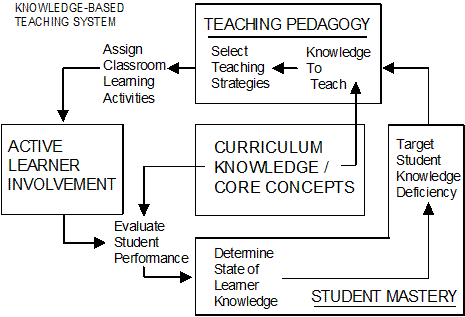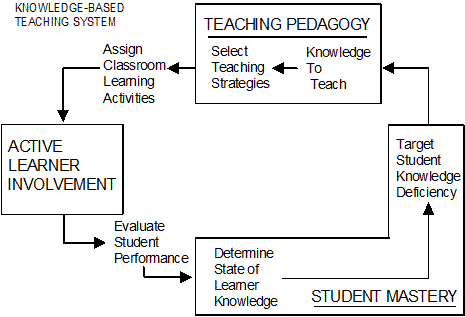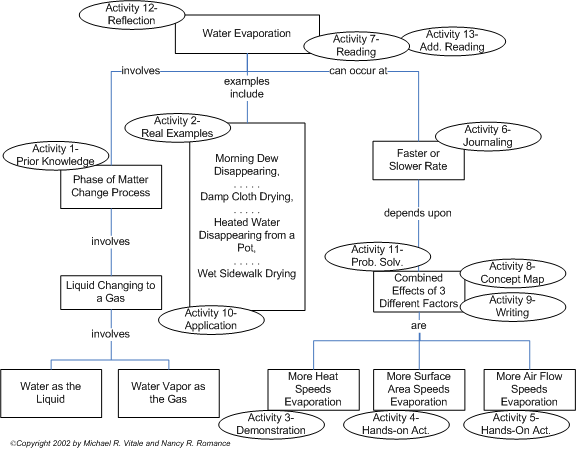

Science IDEAS as a Knowledge-Based Model
The idea of knowledge-based models in instruction came from work in the development of computer-based intelligent tutoring systems in the 1980’s. The idea of a knowledge-based instructional architecture included a number of key components. The first was that the conceptual knowledge to be taught and learned was specified clearly. That is “knowledge representation” was the overarching component of the system. The second was that all aspects of instruction and assessment were explicitly linked to the knowledge representation component. Figure 1 shows an outline of a knowledge-based instructional system.
( Figure 1 )

In contrast, Figure 2 illustrates the form of instructional architecture commonly used in K-8 schools. As Figure 2 shows, teaching, learner activities, and assessment processes of instruction are not explicitly linked to the knowledge to be taught and learned.
( Figure 2 )

An illustration of how Science IDEAS is implemented as a knowledge-based system is shown in the multi-day lesson structure shown in Figure 3. As Figure 3 shows, the propositional concept map representing the knowledge to be taught and learned provides a framework for insuring that instruction is conceptually coherent and meaningful. In turn, Science IDEAS elements are first mapped on the different concepts and then sequenced.
In interpreting Figure 3, it is important to note that (a) different Science IDEAS elements could have been selected for instruction, (b) more activities could have been added to different concepts, and (c) and alternate sequencing of activities could have been chosen. However, despite the flexibility allowed in planning instruction, the overall set of elements experienced by students form a sound pattern of instruction on the topic.
( Figure 3 )
Example of a Science IDEAS Knowledge-Based
Lesson On Water Evaporation
Lesson On Water Evaporation
